When a number is multiplied by itself, the resulting number is called as a square number.
For example, when we multiply 5 by 5, we get 52 = 25. Here, 25 is a square number.
In geometry, the area of a square is the finest example of a square number. Area of a square = Side × Side = Side2, because all the sides of a square are equal. This means the area of a square is always a square number.
Square numbers are always positive and they can never be negative because when a negative number is multiplied by the same negative number, it results in a positive number.
For example, (-7)2 = -7 x -7 = 49 (two negative signs multiplied by each other result in a positive sign). When we multiply -7 by -7, the result is 49 and it is a positive square number. Here are some examples of square numbers.
2 x 2 = 4
-8 x -8 = 64
15 x 15 = 225
We observe the following properties through the patterns of square numbers.
Property 1 :
In square numbers, the digits at the unit’s place are always 0, 1, 4, 5, 6 or 9. The numbers having 2, 3, 7 or 8 at its units' place are not perfect square numbers.
Property 2 :
If a number has 1 or 9 in the unit's place then its square ends in 1.
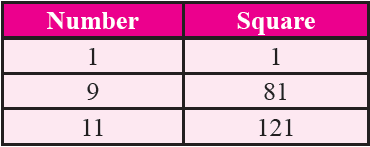
Property 3 :
If a number has 2 or 8 in the unit's place then its square ends in 4.
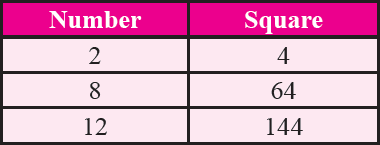
Property 4 :
If a number has 3 or 7 in the unit's place then its square ends in 9.
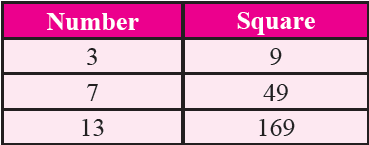
Property 5 :
If a number has 4 or 6 in the unit's place then its square ends in 6.
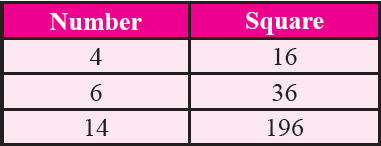
Property 6 :
If a number has 5 in the unit's place then its square ends in 5.
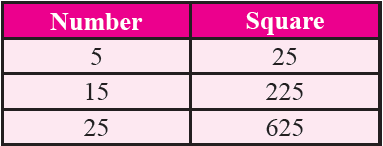
Property 7 :
Consider the following square numbers :
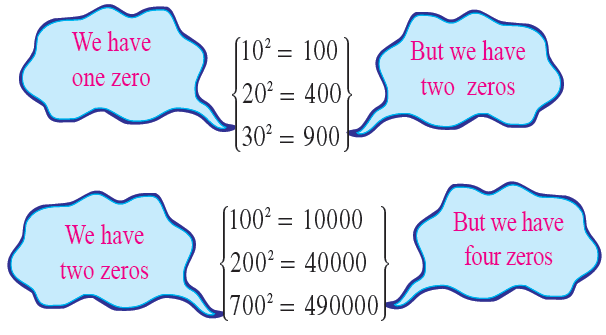
From the square numbers given above, we infer that
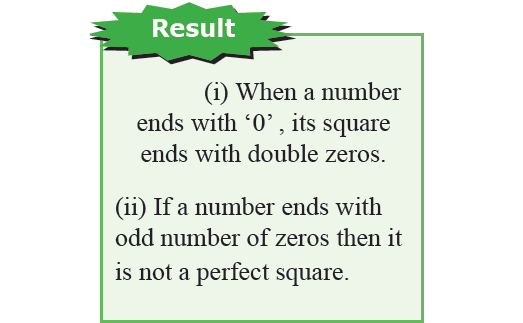
Property 8 :
Consider the following square numbers :
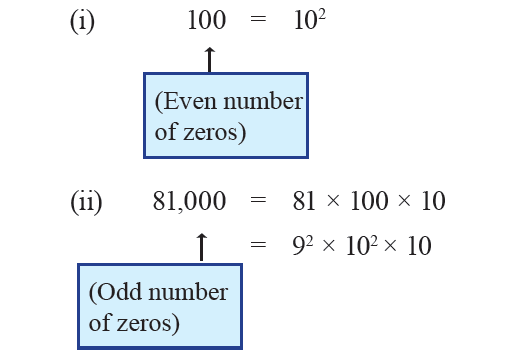
Therefore, 100 is a perfect square and 81000 is not a perfect square.
Property 9 :
Square of even numbers is always even.
It has been illustrated in the table given below.
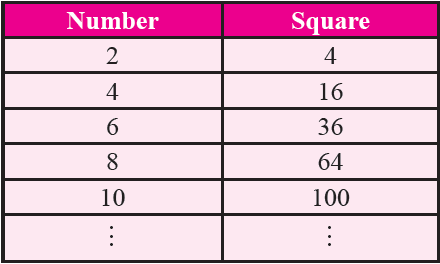
Property 10 :
Square of odd numbers is always odd.
It has been illustrated in the table given below.
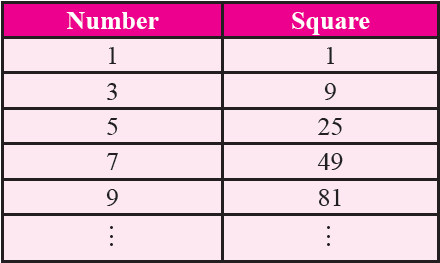
From properties 9 and 10, we infer that

Some Interesting Patterns of Square Numbers
Addition of consecutive odd numbers :
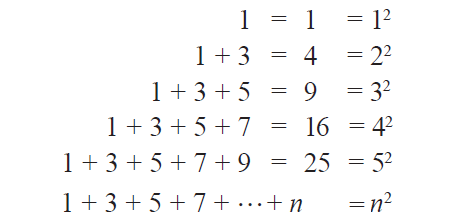
The above figure illustrates the result that the sum of the first n natural odd numbers is n2.
And, square of a rational number a/b is given by

Kaprekar Numbers
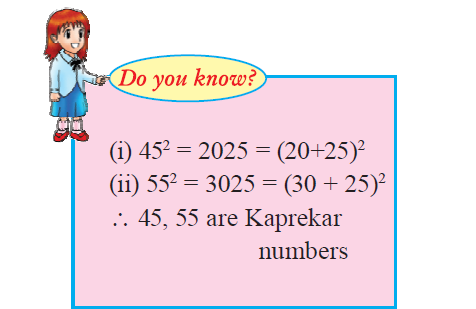 标签:SQUARE,number,its,square,place,numbers,Property,PROPERTIES,NUMBERS
From: https://www.cnblogs.com/chen-ao666/p/17553485.html
标签:SQUARE,number,its,square,place,numbers,Property,PROPERTIES,NUMBERS
From: https://www.cnblogs.com/chen-ao666/p/17553485.html